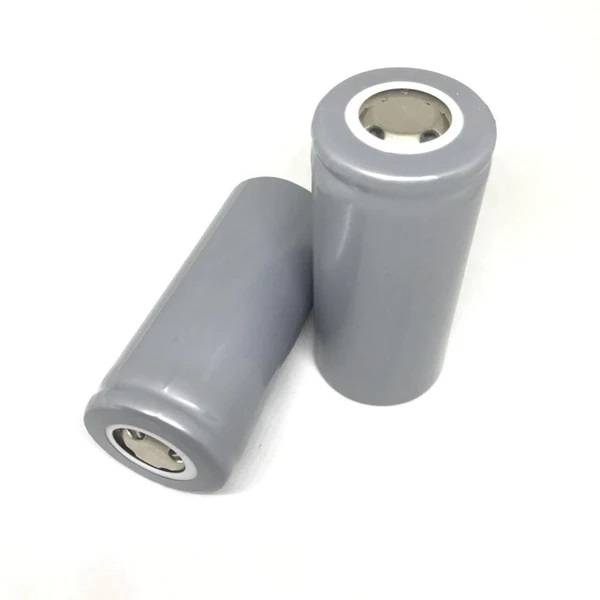Gaston Planté, a French physician, revolutionized the world of batteries with his invention of the rechargeable lead-acid battery in 1859. Since then, batteries have come a long way, offering different capacities and ratings such as the C20 battery rating. However, understanding these ratings can be confusing. In this article, we will explore what the C20 battery rating means, its purpose, and delve into C10 batteries as well.

#post_seo_title
The C20 battery rating signifies that it took 20 hours for the battery to discharge with a specific load attached to it. This rating categorizes the battery as a medium discharge. It is commonly used in the solar industry. However, it is important to note that fully discharging the battery within 20 hours can affect its overall lifespan. A faster drainage rate indicates less available energy.
But what about C10 batteries? Well, as the number of hours increases, the C rating decreases. A C10 rating signifies a fast discharge, where the battery discharges over a period of 10 hours. The C rating serves as a way to compare batteries, especially those with the same output capacity. It is crucial when selecting a battery, as different appliances require batteries with different ratings.
So, how many amps does a C20 battery have? The C20 battery capacity, also known as Amp Hour, denotes the amount of energy stored in the battery. It represents the continuous energy delivery over 20 hours at 80°F without dropping below 10.5 volts. Internationally, a C20 battery has 16 Amps, while in North America, it has 20 Amps.
Moreover, the C20 battery rating not only determines the discharge time but also indicates the charging time at a given voltage. For instance, a C20 battery marked as “20” will reach its maximum Amp-hour capacity within 20 hours. The charging or discharging rate depends on the time it takes for a battery to fully discharge. Different batteries have specific charging and discharging requirements, including the need for charge controllers.
When it comes to pricing, C20 batteries are available in various forms and serve multiple purposes. Prices vary depending on the battery’s intended use and the brand. For example, a pack of 20 AA Rechargeable Batteries NiMH 600mAh 1.2v Garden Solar Ni-Mh Light LED C20 batteries may cost around $14.99. On the other hand, a Replacement Battery for Computer ternacell B9670B, Omron C120F Series, and C20 Series can cost approximately $134.
Now, let’s address some common questions that practitioners in the energy storage or solar industry may have:
1. Can a C20 battery be used for a solar inverter?
Yes, a C20-rated battery with a 7.5A charging and discharging capacity is suitable for solar inverters. However, if the peak sun hours are 5-7 hours per day, C5 batteries are more preferable.
2. Is a C10 battery suitable for a normal inverter?
Absolutely! A C10 battery provides more power over a 10-hour cycle and can be used with a normal inverter. As long as the battery has enough capacity to meet the appliance’s needs, the system will function properly.
3. What are the advantages of using C20 batteries?
C20 batteries offer a medium discharge rate and are commonly used in the solar industry. They provide a reliable and consistent energy supply, ensuring optimal performance of solar inverters and other applications.
4. Are C20 batteries more expensive than other battery types?
The price of C20 batteries varies depending on their purpose and brand. While specific prices differ, C20 batteries can be found in various price ranges to suit different budgets and requirements.
5. Can a C20 battery be used in a car?
Yes, C20 batteries can be used in car batteries. However, it is important to ensure compatibility with the car’s electrical system and consult with a professional if needed.
6. What is the significance of the C rating in battery selection?
The C rating is crucial for comparing batteries with similar output capacities. Different appliances require batteries with specific C ratings, ensuring optimal performance and longevity.
7. How does the C20 battery rating impact battery life?
Fully discharging a C20 battery within 20 hours can affect its overall lifespan. It is advisable to avoid complete discharge within this time frame to maintain the battery’s longevity.
8. Do C20 batteries require special charging regimes?
Different batteries have specific charging and discharging requirements. While C20 batteries have a similar charging rate to their discharge rate, it is essential to follow the recommended charging regimes and use appropriate charge controllers for optimal battery performance.
9. Are there other battery ratings besides C20 and C10?
Yes, there are various battery ratings available, depending on the specific application and industry. It is important to select the appropriate battery rating based on the intended use and requirements.
10. Can C20 batteries be used for off-grid solar systems?
Yes, C20 batteries are commonly used in off-grid solar systems. Their medium discharge rate and capacity make them suitable for providing reliable power storage in remote areas without access to the grid.
In conclusion, understanding the C20 battery rating and its implications is crucial when selecting batteries for solar and energy storage systems. By considering factors such as discharge rate, capacity, and compatibility with specific applications, practitioners can make informed decisions to ensure optimal performance and longevity of their systems.

